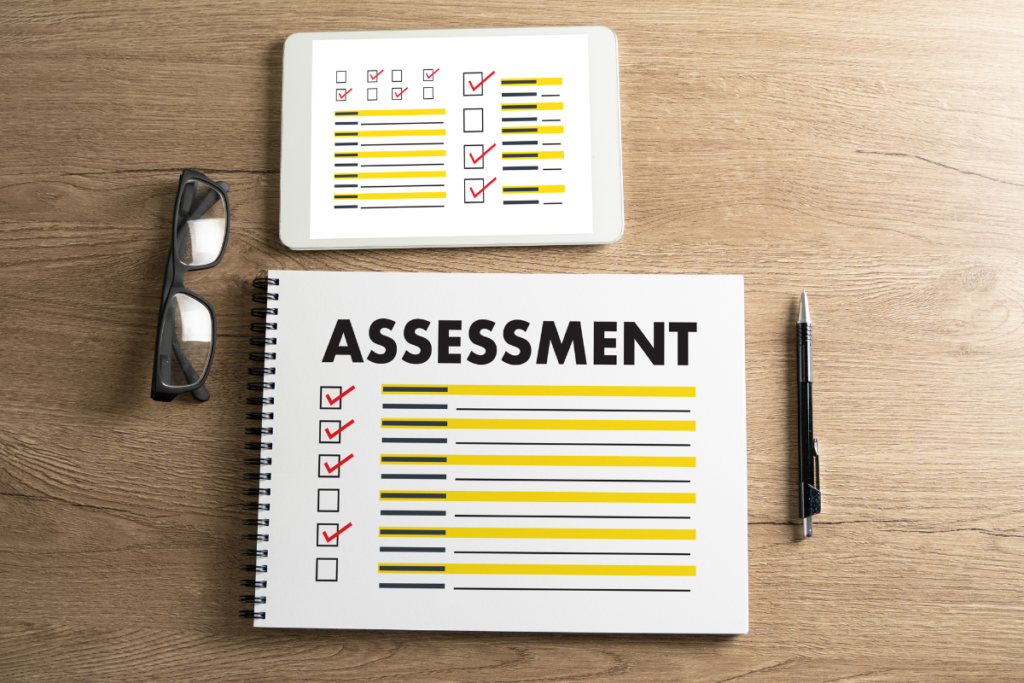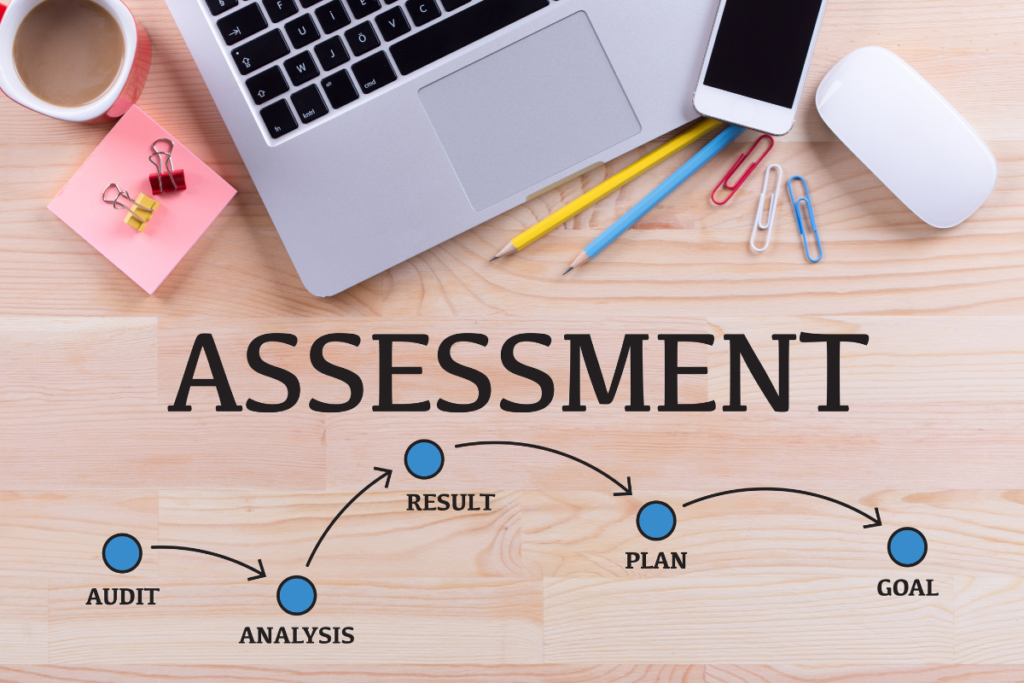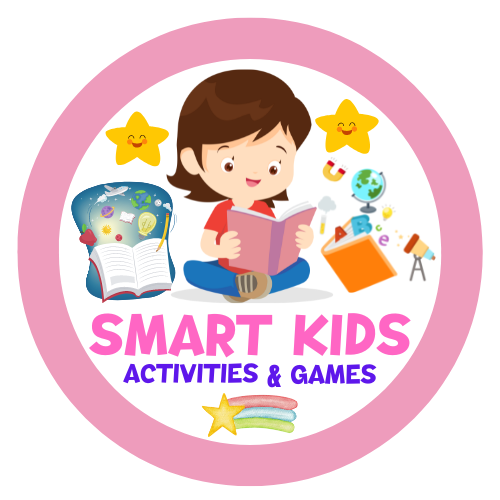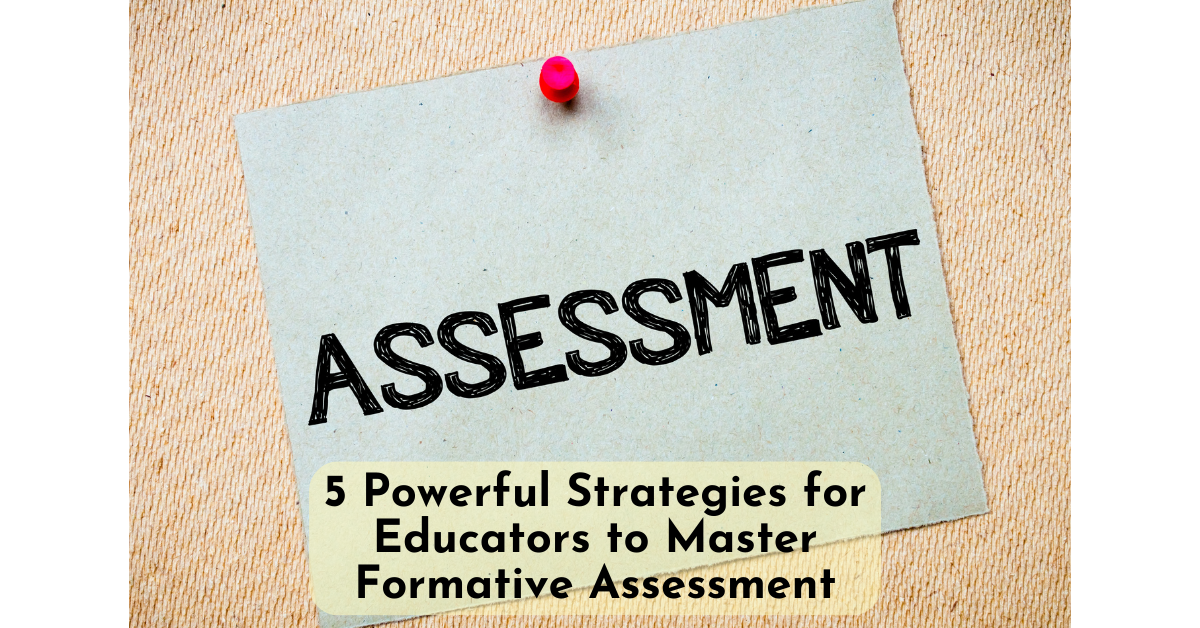Formative Assessment Mastery: 5 Essential Strategies Empowering Educators
Introduction
Welcome to our comprehensive guide on mastering the art of formative assessment for educators. In this blog post, we will explore the significance of formative assessment, delve into effective strategies, discuss tools and technology to facilitate the process, address common challenges, and provide real-world examples of successful implementation.

The Importance of Formative Assessment
Formative assessment is not just another educational buzzword; it’s a powerful tool that can transform the learning experience. It involves ongoing evaluation of student understanding and progress throughout a learning journey. Here’s why it matters:
- Individualized Learning: It helps teachers gauge where students are in their learning process and tailor instruction to meet individual needs. This personalized approach can lead to better learning outcomes for every student.
- Timely Insights: Formative assessment provides timely insights into student understanding. Instead of waiting for a high-stakes summative assessment, educators can make adjustments in real-time, ensuring that students don’t fall behind.
- Empowering Students: It empowers students to take an active role in their own learning. When students are aware of their progress and areas for improvement, they become more engaged and motivated learners.
- Creating a Positive Learning Environment: Formative assessment fosters a growth mindset and a positive learning environment. It encourages students to view mistakes as opportunities for learning and growth rather than failures.
The Ultimate Guide to Addition Worksheets: Boosting Math Skills
Strategies for Effective Formative Assessment
1. Clear Learning Objectives
Before embarking on formative assessment, educators must establish clear learning objectives. These objectives serve as a roadmap, ensuring that assessments align with desired outcomes. When students understand what is expected of them, it becomes easier for them to track their own progress.
2. Varied Assessment Methods
Effective formative assessment is not one-size-fits-all. It encompasses various methods, including:
- Quizzes: Short quizzes can be used to assess understanding of specific concepts or to review material.
- Polls and Surveys: These can gauge student opinions, preferences, and even their level of confidence in a particular topic.
- Discussions: Classroom discussions and debates can provide insights into students’ grasp of a subject and their ability to articulate their thoughts.
- Peer Assessments: Encouraging students to assess the work of their peers can improve their critical thinking skills and provide valuable feedback.
- Self-Assessments: Students can evaluate their own work, setting goals for improvement and reflecting on their learning journey.
Diversifying assessment types caters to different learning styles and keeps students engaged. Moreover, it allows educators to gather a more comprehensive picture of student progress.
3. Timely Feedback
Timely feedback is the heartbeat of formative assessment. It offers students a chance to reflect on their performance and make necessary adjustments. Feedback should be constructive, specific, and actionable. Instead of simply marking answers as right or wrong, educators should provide explanations, suggestions for improvement, and opportunities for students to ask questions.
4. Student Involvement
Engage students actively in the assessment process. Encourage them to set goals, track their progress, and reflect on their learning journey. Peer assessment and self-assessment can be powerful tools in this regard. When students are given the responsibility of assessing their own work or that of their peers, it promotes critical thinking and metacognition, which are crucial skills for lifelong learning.
5. Data Analysis
Collect and analyze assessment data to gain insights into student performance. This data-driven approach allows educators to identify trends, areas of improvement, and tailor instruction accordingly. Modern technology and learning management systems (LMS) can streamline this process by providing easy access to assessment data. By leveraging this data, educators can make data-informed decisions about their teaching strategies.
Debunking 10 Powerful Myths: The Truth About Differentiated Instruction

Tools and Technology for Formative Assessment
In the digital age, various tools and technology platforms simplify the formative assessment process. Here are some technologies educators can use:
- Learning Management Systems (LMS): These platforms allow educators to create quizzes, surveys, and discussion boards, making it easy to gather and analyze student responses.
- Online Quizzes and Polls: Tools like Kahoot!, Quizlet, and Poll Everywhere facilitate the creation of interactive quizzes and polls, making learning engaging and fun.
- Interactive Whiteboards: Interactive whiteboards enable educators to collect real-time responses from students during lessons, promoting active participation.
- Formative Assessment Apps: Numerous apps are designed specifically for formative assessment, offering features such as instant grading and detailed feedback.
- Data Analytics Tools: Advanced analytics tools can help educators dig deeper into the data collected during assessments, providing insights that inform instructional decisions.
While technology can enhance formative assessment, it’s important to remember that the focus should always be on the learning outcomes and the needs of the students. Technology is a means to an end, not an end in itself.
Common Challenges and How to Overcome Them
Despite its benefits, formative assessment can pose challenges in educational settings. Here are some common challenges and strategies to overcome them:
1. Time Constraints
Educators often cite time constraints as a barrier to effective formative assessment. With a packed curriculum and numerous responsibilities, finding time for ongoing assessment can be challenging.
Solution: Plan assessments strategically and integrate them into the teaching process. For example, use the first few minutes of a class for a quick quiz or employ exit tickets to gauge student understanding as they leave the classroom. By weaving assessment seamlessly into your teaching, you can overcome time constraints.
2. Resistance to Change
Introducing formative assessment into a traditional classroom may face resistance from both educators and students who are accustomed to more traditional teaching methods.
Solution: Seek professional development opportunities for educators to familiarize them with formative assessment techniques and tools. Additionally, involve students in the process. Explain the benefits of formative assessment to them and encourage them to take an active role in their own learning journey.
3. Limited Resources
Some educators may have limited access to technology or other resources required for effective formative assessment.
Solution: Embrace low-tech or no-tech options. Formative assessment doesn’t always require the latest technology. Simple techniques like exit slips, group discussions, or one-on-one check-ins with students can be just as effective in gauging understanding.
5 Essential Tips for Effective Classroom Management Success
Real-World Examples of Successful Formative Assessment
Let’s explore two real-world examples of how formative assessment transformed classrooms:
Example 1: Mrs. Smith’s Language Arts Class
Mrs. Smith implemented regular peer review sessions where students provided feedback on each other’s essays. This not only improved writing skills but also encouraged collaboration and communication. By integrating peer assessment, Mrs. Smith empowered her students to become more active participants in their own learning. They learned not only how to write better but also how to give and receive constructive criticism, a valuable skill in any field.
Example 2: Mr. Patel’s Math Workshop
Mr. Patel used online quizzes to gauge his students’ understanding of math concepts in real-time. He adjusted his teaching approach based on the results, leading to improved student performance. The use of technology allowed Mr. Patel to efficiently gather data on student comprehension and tailor his instruction accordingly. Students appreciated the immediate feedback and felt more confident in their mathematical abilities.
Conclusion
Formative assessment is a dynamic process that empowers educators and students alike. By mastering
Download free activities and teaching resources Click Here


